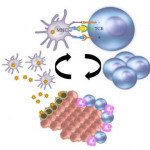Re: Robot-assisted partial nephrectomy for the treatment of challenging renal tumors: To get the best recommendation
Letter to the Editor
Robot-assisted partial nephrectomy for the treatment of challenging renal tumors: To get the best recommendation (RE: Comparison of robot-assisted and open partial nephrectomy for completely endophytic renal tumours: a single centre experience)
Dear Sir,
With the wide application of robotic surgery in partial nephrectomy (PN), urologists became more interested in assessing its efficacy and safety for the treatment of challenging renal tumors [1-5]. In the current study, Kara and colleagues published the first retrospective report to compare between robot-assisted partial nephrectomy (RAPN) and open partial nephrectomy (OPN) for the treatment of completely endophytic renal tumors [1]. We congratulate the authors for their valuable work. 15
As expected, they found less blood loss, shorter length of hospital stay, and lower intraoperative transfusion rates in favor of the robotic group. In fact, the safety and superiority of RAPN over OPN in terms of the intraoperative and perioperative outcomes is no longer a matter of debate. In a recent systematic review and met-analysis, RAPN was found to be an efficient alternative to OPN with the advantages of a low perioperative complication rates, short hospital stay and less blood loss [6]. Despite no RCTs present in this meta-analysis, it confirms the minimally invasive advantages of RAPN over OPN. Recently, in a retrospective matched-pair comparative study between RAPN (n=190) and OPN (n=190) for the treatment of complex renal tumors (RENAL score ≥7), the authors concluded that 35 RAPN is associated with less blood loss (p<0.001), shorter hospital stay (p<0.001) and lower postoperative complication rates (p=0.002); on the other hand, the long-term oncological and functional outcomes at median follow-up (49 and 52 months for RAPN and OPN, respectively) were similar [2]. The treatment of completely endophytic tumors is considered a major challenge to the surgeon. The inaccuracy in identification of tumor extension, the increased risk of vascular entry, and the need for reconstruction of a large parenchymal and pelvicalyceal defect might have a negative influence on the oncologic safety and renal function preservation. However, the introduction of robotic technology and increasing experience in RAPN have allowed for a meticulous dissection of endophytic tumors with intraoperative US guidance, renorrhaphy completion within short time, and improved perioperative outcomes. In experienced hands, when comparing the exophytic, mesophytic and totally endophytic renal tumors, RAPN was found to be safe and feasible procedure in terms of complication rates, functional and oncologic outcomes [3,4]. To our knowledge, the length of WIT is considered a crucial factor affecting the postoperative renal function after PN. The continue evolving in RARP techniques, for example, the sliding-clip renorrhaphy [7], had allowed skillful reconstruction of the large parenchymal and pelvicalyceal defect within safe and acceptable WIT [1-5]. And the important question, what about the long-term oncological and functional difference in estimated glomerular filtration preservation rates and latest functional follow-up between RAPN and OPN. These outcomes were assessed at median follow-up of 15 and 18 months for RAPN and OPN, respectively [1]. This period of follow-up might not be long enough to arrive at a meaningful conclusion regarding the oncologic and functional outcomes of both procedures. Being a retrospective study is one of the limitations in this study; however, we believe that to arrange a well-designed prospective randomized study comparing the robotic and open procedures is a dream difficult to be achieved. In summary, the superiority of RAPN over OPN regarding the perioperative safety has been proven even in challenging cases [1,2,6]. Recent guidelines have poor evidence in recommending the ideal approach to treat large-size, high-complex and/or totally endophytic renal tumors. Thus, the future research directions should be focused on evaluating the long-term outcomes of different PN procedures in order to reach a firm recommendation for treatment of these challenging cases.
References:
- Kara O, Maurice MJ, Malkoc E, et al. Comparison of robot-assisted and open partial nephrectomy for completely endophytic renal tumours: a single centre experience. BJU Int. 2016 Aug 1. doi: 10.1111/bju.13572.
2. Wang Y, Shao J, Ma X, Du Q, Gong H, Zhang X. Robotic and open partial nephrectomy for complex renal tumors: a matched-pair comparison with a long-term follow-up. World J Urol. 2016. doi:10.1007/s00345-016-1849-8.
3. Komninos C, Shin TY, Tuliao P et al. Robotic partial nephrectomy for completely endophytic renal tumors: complications and functional and oncologic outcomes during a 4-year median period of follow-up. Urology 2014; 84: 1367–73.
4. Curtiss KM, Ball MW, Gorin MA, Harris KT, Pierorazio PM, Allaf ME. Perioperative outcomes of robotic partial nephrectomy for intrarenal tumors. J Endourol 2015; 29: 293–6.
5. Abdel Raheem A, Alatawi A, Kim DK, et al. Outcomes of high-complexity renal 36 tumours with a Preoperative Aspects and Dimensions Used for an Anatomical (PADUA) score of ≥10 after robot-assisted partial nephrectomy with a median 46.5-month follow-up: a tertiary centre experience. BJU Int. 2016 Apr 22. doi:10.1111/bju.13501.
6. Wu Z, Li M, Liu B, et al. Robotic versus open partial nephrectomy: a systematic 49 review and meta-analysis.
7. Benway BM, Wang AJ, Cabello JM, Bhayani SB. Robotic partial nephrectomy with sliding-clip renorrhaphy: technique and outcomes. Eur Urol, 55 (2009), pp. 592–599
Ali Abdel Raheem and Koon Ho Rha
Department of Urology and Urological Science Institute, Yonsei University College of Medicine, Seoul, South Korea



